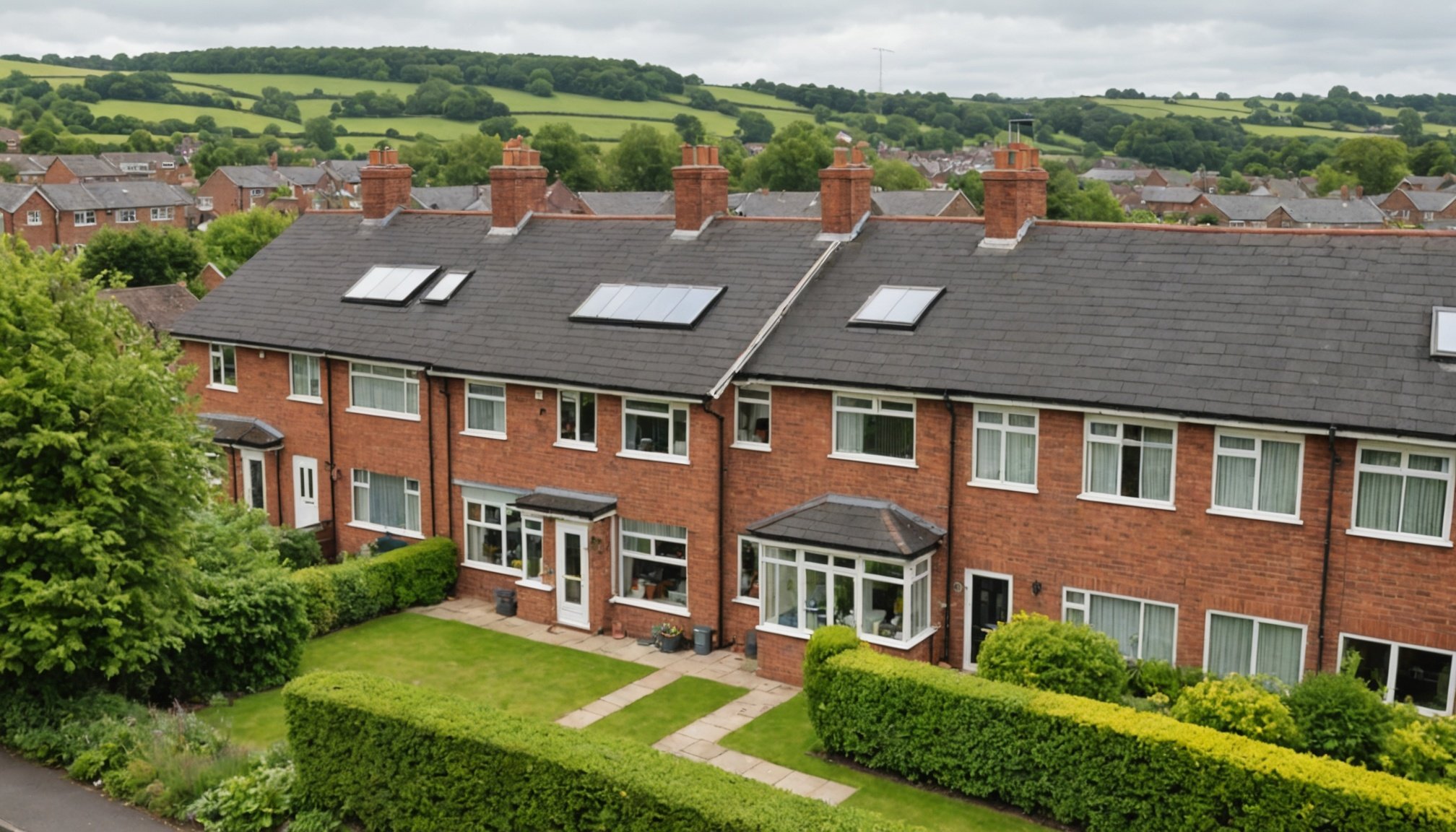Understanding CO2 Detectors in UK Terraced Homes
The importance of CO2 detectors in residential safety can’t be overstated, especially in the complex environments of UK terraced homes. These detectors are vital tools in preventing the harmful effects of CO2 exposure, which can lead to serious health complications or even fatalities if undetected.
Importance of CO2 Detectors
In UK terraced homes, compact layouts increase the risk of CO2 accumulation due to common household activities such as cooking or heating. The limited ventilation can exacerbate this issue, making CO2 detectors critical in ensuring the safety of residents.
Also to discover : Seamlessly Blend Smart Lighting into Your UK Home: A Homeowner’s Guide to Integration
Overview of UK Regulations
According to current UK regulations, installation of CO2 detectors in homes is guided by specific safety standards. These standards ensure that detectors are strategically placed to maximize early detection and minimize risks. Compliance with these regulations is essential to avoid penalties and ensure homeowner protection.
Specific Risks in Terraced Homes
Terraced homes pose unique risks due to their shared structural walls and proximity of living areas. If a fuel-burning appliance malfunctions, rising CO2 levels can quickly permeate the living space. Employing well-maintained CO2 detectors in accordance with safety standards offers a proactive solution to this pervasive issue, reducing the potential for dangerous exposure.
Also to discover : Top insulated lunch pouches for fresh, hot meals on the go
Optimal Locations for CO2 Detectors
Proper installation of carbon dioxide detectors is crucial for ensuring safety in any home. It’s essential to consider both room specifications and detector placement to prevent potential hazards.
Recommended Locations in the Home
To maximise safety, install CO2 detectors in key areas. Prioritise spaces like kitchens, boiler rooms, and bedrooms—places where gas leaks are more common. High-risk areas should be the primary focus for detector installation. Evaluate each room’s conditions, such as ventilation and electrical outlets, before finalising placement decisions.
Height and Distance Guidelines
For optimal safety and efficiency, detectors should be mounted at the correct height. Place them at least 5 feet above the floor and ensure they are a safe distance from fuel-burning appliances to avoid false alarms. Avoid positioning them in confined spaces where the airflow is restricted, as it could affect the detector’s functionality.
Compliance with UK Standards
Compliance with UK standards is non-negotiable for effective coverage across various rooms. Regulations stipulate correct detector placements to maintain safety. For multi-story terraced homes, consider the unique architectural features, which might require additional detectors to ensure comprehensive coverage. Adhering to these guidelines promotes a safer living environment.
Installation Tips for CO2 Detectors
Getting a CO2 detector set up properly is crucial for its efficiency and accuracy. For those inclined towards a DIY approach, understanding the correct installation process can save time and resources. Begin by selecting an appropriate location, ideally near bedrooms and living spaces, while avoiding high-humidity areas like bathrooms. A step-by-step installation guide typically involves:
- Mounting the detector at eye level for optimal detection.
- Ensuring it’s at least 15 cm below the ceiling if wall-mounted.
- Using screws and wall plugs to secure the device firmly.
Even with these DIY tips, situations may arise where professional installation is advisable. If you’re unsure about wiring or need multiple detectors networked into a monitoring system, seeking specialized assistance ensures compliance with safety standards.
Awareness of common pitfalls is essential. Never ignore the manufacturer’s specific guidelines, and ensure the detector is not obstructed by furniture or curtains, as this can impede its effectiveness. Regularly test and maintain your detector according to the manufacturer’s instructions to preserve its lifespan and reliability. By taking these precautions, you’ll have peace of mind knowing that your home is both safe and compliant.
Maintenance and Troubleshooting of CO2 Detectors
Proper upkeep of CO2 detectors is essential for ensuring they provide reliable alerts and maintain efficient operation. Regular detector maintenance involves performing straightforward checks and replacements.
Routine Maintenance Practices
Conducting regular tests on CO2 detectors is fundamental to verify their functionality. Cleaning the detector’s external surfaces is vital to keep them free of dust and debris, which could affect performance. Adhere to a routine of battery checks to avoid unexpected power failures. Each detector comes with recommendations for replacement schedules for both batteries and the entire unit, typically every 5-7 years, depending on the model specifications.
Identifying Malfunctions
A CO2 detector may exhibit signs of faults such as inconsistent alert patterns or no response during tests. Troubleshooting tips include checking for interference from other devices, ensuring proper placement, and reviewing user manuals for guidance. Understanding when to replace an old detector is crucial; if the unit is beyond its operational lifespan or fails during testing, replacement is advised.
Understanding Alerts and Readings
Deciphering CO2 detector signals is imperative for accurate response. If an alarm sounds, determine the CO2 levels and ventilate the area if necessary. Recognise the difference between a real alert and a false alarm by verifying detector placement and conducting regular tests.
Visual Aids and Resources
When it comes to understanding detector placement and adhering to legal requirements, having the right visual aids can be incredibly helpful. Suggested diagrams for detector placement offer practical examples, ensuring that you position your equipment optimally for safety and efficiency. These visual guides can illustrate the best practices for placing detectors in residential or commercial environments, reducing the risk of accidental exposure to hazardous gases.
To meet the legal requirements in the UK, specific guidelines must be followed. Various resources are available to help you understand these obligations in detail. While direct links cannot be provided here, it’s crucial to consult the most current UK legislation and guidelines regarding detector installations. This guarantees compliance and offers peace of mind knowing that you’re operating within the law.
For those keen on gaining a deeper understanding, additional reading materials on CO2 safety and detection are invaluable. These resources provide comprehensive insights into the legal requirements and safety best practices, empowering you to make informed decisions. Whether you’re a homeowner or an industry professional, having access to these references enhances both safety and compliance, allowing you to safeguard your environment effectively.











